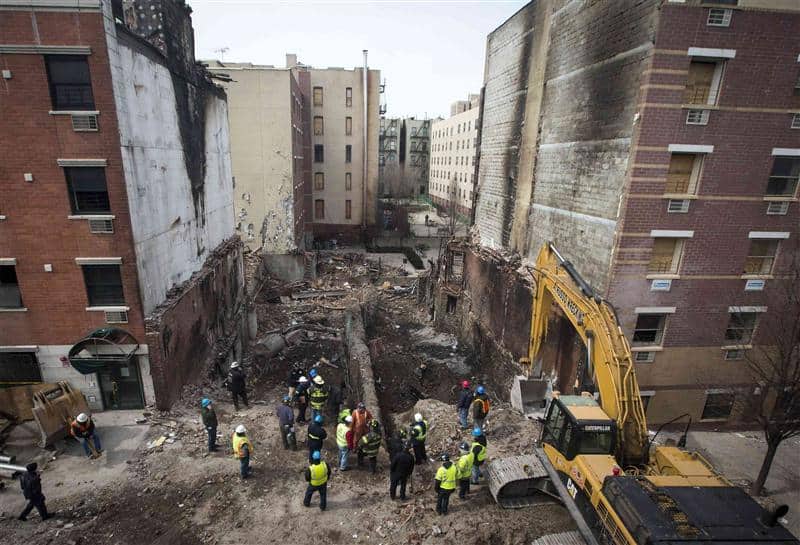
Tenants in a Harlem apartment building near the site of last month’s deadly gas explosion are suing their landlord and the city of New York for failing to test for allegedly unsafe levels of toxic substances, including lead and asbestos, inside their apartments. The suit was filed on Friday in housing court by tenants of […]
 Tenants in a Harlem apartment building near the site of last month’s deadly gas explosion are suing their landlord and the city of New York for failing to test for allegedly unsafe levels of toxic substances, including lead and asbestos, inside their apartments.
Tenants in a Harlem apartment building near the site of last month’s deadly gas explosion are suing their landlord and the city of New York for failing to test for allegedly unsafe levels of toxic substances, including lead and asbestos, inside their apartments.
The suit was filed on Friday in housing court by tenants of the12 apartments in the building at 89 East 116Street. The blast broke windows in their building, and dust and debris settled in the apartments. The explosion destroyed two buildings, 1146 and 1144 Park Avenue, Law360 reports. The Department of Housing Preservation and Development (HPD) initially issued a vacate order for 89 East 116, but rescinded it after finding no dangerous asbestos levels in the air around the building.
An attorney for the tenants arranged for an independent laboratory to analyze air and dust inside some of the apartments. The analysis found lead at 10 times the allowed federal level and asbestos particles in the dust in excess of the city’s established safety margin of 1 percent. The attorney told Law360 that the city never measured dust samples or indoor air quality. HPD said on Thursday that the building had no record of lead-paint hazards in the past and air tests for asbestos at the demolition site were negative.
Though the city said tenants could clean their own apartments of dust and debris from the explosion, their attorney says qualified professionals and special equipment are needed to remove dangerous particulate matter. Tenant Silvia Apolinar, said one of her three children – who are 14, 11 and 4 – suffers from asthma and conditions in the building pose a threat to the family’s health and safety, according to Law360.
The explosion killed eight people and injured more than 70, Law360 reports. The National Transportation Safety Board, which is involved in the investigation, said the explosion is thought to have involved a cast iron distribution pipeline carrying natural gas.
The tenants asked for a court order compelling the landlord and the city to assess all dangerous materials inside the building, clean up, and provide shelter for the residents during the cleanup, according to Law360.


